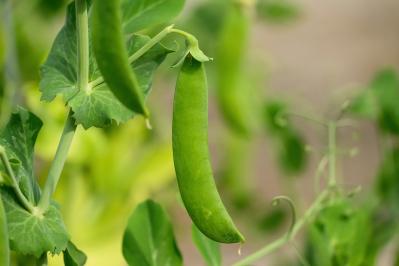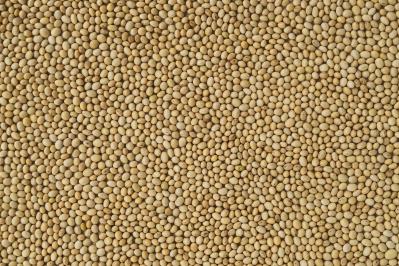
Analysis
of legumes
Legumes are the edible seeds of plants from the Fabaceae family (legumes) that ripen in a pod.
The most important examples include beans, peas, lentils, soybeans, chickpeas, and lupins. They play an important role in human nutrition as they are an excellent source of high-quality plant protein, fiber, and important micronutrients. Legumes are also rich in fiber and minerals such as iron, magnesium, and zinc.
So-called lectins can pose a certain risk. These are special proteins that occur in many plants, especially legumes, and can form a specific bond with carbohydrates. When consumed raw or insufficiently processed, they can be toxic as they can damage the intestinal wall and hinder the absorption of nutrients.
Challenges for producers and distributors of legumes
The production of food from legumes is complex. From harvest to end product, there are numerous risks that can compromise food safety and the quality of legume products. Producers and distributors of legume products should identify and minimize these risks in order to comply with legal requirements and ensure consumer confidence.
Contaminants from the environment
Legumes are grown in fields around the world and can absorb substances from the soil. A key challenge is contamination with heavy metals such as lead and cadmium, as well as arsenic. Mineral oil hydrocarbons (MOSH/MOAH), which can enter the product via the environment, also pose a risk.
Residues and contaminants
The use of pesticides is often unavoidable to prevent crop failures due to pests. However, without careful control, residues can remain in the legumes. Similarly, improper storage conditions can promote the formation of mycotoxins and lead to pest infestation.
Safety in the production process
Sterilization is a crucial step in the production of canned legumes. Inadequate heating can allow microorganisms to grow, posing a significant health risk. Similarly, the release of bisphenol A (BPA) from packaging materials into food can cause contamination.
Allergic reaction
Peanuts pose a significant allergenic risk within the legume family, as they are one of the most common causes of severe allergic reactions. Their allergens can trigger life-threatening symptoms such as anaphylactic shock, which is why correct labeling on food products is required by law.
To ensure compliance with all legal requirements, the accredited laboratories of the Tentamus Group offer a wide range of analyses.

Necessary tests for the analysis of legumes
Product-specific analyses and procedures vary depending on the type of legume product.
Analysis of residues and contaminants
To ensure food safety, state-of-the-art analytical methods such as gas and liquid chromatography with mass spectrometry (GC-MS/LC-MS) are used. This precise residue analysis enables the reliable detection or exclusion of undesirable substances, with the selection of tests depending on the product in question. This allows us to test a sample for more than 900 different pesticides at the same time.
The following residues and contaminants, among others, can be detected:
- Heavy metals
- Sodium
- MOSH/POSH/MOAH
- Pesticides
- Bisphenol A
- Perchlorate and chlorate
- Mycotoxins
Microbiological testing
Specific microbiological tests are crucial for legume products in order to ensure food safety. One of the most important analyses aims to detect the presence of pathogenic germs such as salmonella, Listeria monocytogenes, and Escherichia coli, which may already be present on the raw seeds. In preserved products, testing for Clostridium botulinum is particularly relevant, as its spores can survive heat treatment and form the life-threatening botulinum toxin. In addition, it is important to check the total bacterial count and the presence of yeasts and molds in order to assess the general hygiene and storage stability of the products. These microbiological criteria are of great importance not only for fresh legumes, but also for dried and processed legumes.
The Tentamus Group laboratories offer the following microbiological tests, whereby the specific tests depend on the respective legume product:
- Sterility tests: Incubation for 10 days at 37°C, aerobic and aerobic mesophilic total bacterial count, aerobic and anaerobic spore formers
- Total bacterial count (aerobic mesophilic & anaerobic mesophilic)
- Salmonella
- Bacillus cereus
- Staphylococcus aureus
- Thermophilic aerobic spore formers
- Thermophilic anaerobic spore formers
- Listeria
- Clostridia, especially Clostridium botulinum
Nutritional analysis "Big 8"
The so-called “Big 8” of nutritional analysis refers to the eight nutritional values that can be declared on packaging in accordance with the Food Information Regulation (LMIV). It comprises the seven mandatory values (energy, fat, of which saturated fatty acids, carbohydrates, of which sugar, protein, and salt) as well as the voluntary declaration of fiber. The “Big 8” of nutritional analysis is particularly relevant for legume products because it transparently shows their high content of valuable nutrients such as protein, fiber, and complex carbohydrates, thus underlining the importance of these foods for a healthy diet. The accredited laboratories of the Tentamus Group carry out the complete nutritional analysis of the “Big 8” in accordance with the legal requirements of the LMIV.
Drained weight
Determining the drained weight is relevant for legume products that are preserved in liquid. This applies, for example, to chickpeas, lentils, or beans in cans or jars. The purpose of determining the drained weight is to declare the actual proportion of the solid product that is intended for consumption. The liquid in which the product is preserved, which is not intended for consumption, is therefore deducted from the weight. According to the LMIV, the indication of the drained weight on the packaging is required by law for such products and serves to ensure transparency for consumers. In addition, the drained weight is the basis for the correct calculation and declaration of nutritional values, which always refer to the solid food and not to the liquid in which it is preserved.
Labeling
Through labeling tests, the accredited laboratories of the Tentamus Group ensure that product labels fully comply with the complex requirements of the Food Information Regulation (LMIV) and other laws. Every mandatory piece of information, from the list of ingredients to allergens and nutritional tables, is checked for correctness and completeness in order to protect producers from legal risks. This prevents product recalls and warnings while strengthening customer confidence in the transparency and quality of legume products.
Sensory testing
The Tentamus Group's laboratories offer sensory testing for legume products to assess their quality based on appearance, smell, taste, and texture. Particular attention is paid to uniform size, consistency after cooking, and the absence of off-odors and off-flavors to ensure product quality and consistency.

Sample shipment for the analysis of legumes
To ensure fast and reliable analysis of your legume products, the Tentamus Group offers flexible options for sample delivery: use a parcel service, drop off the samples in person, or book our convenient pick-up service in Germany.

Relevant legal bases and guidelines
- Commission Regulation (EU) 2023/915 (Contaminants Regulation)
- Regulation (EC) No. 396/2005 of the European Parliament and of the Council (maximum residue levels for pesticides)
- Regulation (EU) No. 1308/2013 of the European Parliament and of the Council
- Commission Implementing Regulation (EU) No. 543/2011
- Commission Implementing Regulation (EU) No. 2023/2782
food@tentamus.com
+49 30 206 038 230
Overview of Tentamus Group laboratories offering analyses of legumes
The following laboratories of the Tentamus Group offer analyses of legumes:
You may also be interested in:
- Analyses
Residue analysis
Microbiological testing
Sensory testing
Analysis of Food - Product categories
Nuts
Dried fruit
Muesli and cereals
Grains - Other services
Hygiene Training
Sample logistics